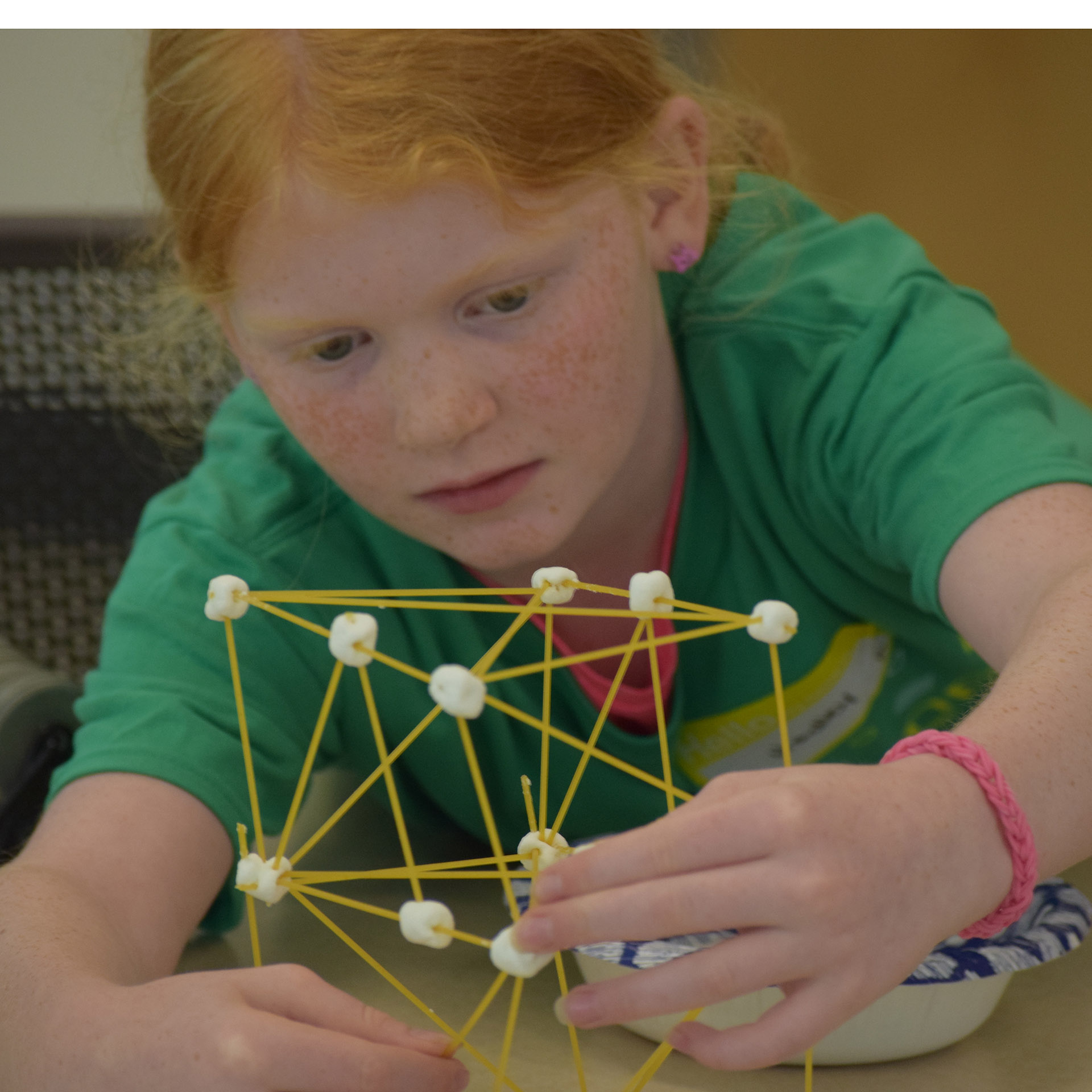
News
SMC’s STEM Camp a Popular Way to Beat the Heat
Published on June 19, 2024 - 2 p.m.
Whether you’re measuring load-bearing Leaning Towers of Pasta built of raw spaghetti and marshmallows, coding with artificial intelligence (AI), running Abigail Craft’s math-based pizzeria to learn fractions or making multi-colored slime, hands-on activities stress problem-solving, critical thinking, communication, creativity and collaborative teamwork.
Southwestern Michigan College’s sixth STEM Camp June 18-20 for students entering grades 4-6 this fall accommodates 240 from across Michiana to the William P.D. O’Leary Building on the Dowagiac campus.
Math and Physics Professor Andrew Dohm, a mechanical engineer, writes the grants that the Bosch Community Fund awards to underwrite four-workshop summer camps that are free to all participants.
Each workshop explores a STEM letter — science, technology, engineering and mathematics.
Abigail and Hadley constructed a 21-centimeter, 13-gram tower that held up 126 grams before buckling under a cardboard platform on which a series of small weights were placed.
“Engineers are professional problem-solvers,” Dohm said. “The design process defines a problem; identifies constraints on a solution, such as time, money and materials; brainstorms multiple solutions; selects the most promising solution; prototypes the solution; tests and evaluates the prototype; iterates to improve the prototype; and communicates the findings.”
“We have circular tables because physics students work together in groups to solve problems,” Dohm said. “Everybody brings something different to the table because of different experiences, knowledge and skills. When you combine creative solutions, great things can happen. Your constraint is you get 20 pieces of spaghetti and 30 marshmallows.”
Edwardsburg eighth-grade computer science teacher Deb Kraska led coding on laptops. Their programming introduction took them to code.org, joining 92 million students in all 50 states — 39 million of them young women.
“My students start out making their own web pages so they can creatively express themselves,” Kraska said. “Next, they create games, learning how to make things move on their screens. Then they create an app. We do 3D printing and AI, too.”
“Over 70 percent of jobs in coding have nothing to do with computers or software,” Kraska said. “Coding is in industries such as fashion, art, medicine, even farming. There are hundreds of coding languages,” including 1995’s JavaScript, primarily used to build web-based applications.
“Coding is like learning a foreign language,” Kraska said. “We’re going to use blocks today, which is like the first step. It’s important you understand how data is used because companies collect information to train their AI. You’re participating, whether you realize it or not every time you like, comment, share, and with what you watch and for how long.”
Another Edwardsburg Middle School teacher, Nichole Dohm, conducted chemical-reaction experiments, adding three kinds of candy — Nerds, Sweet Tarts and Mentos — to Diet Coke to compare them inflating a balloon; dropping raisins into a clear solution, then adding baking soda; and simulating lava lamps.
“When we put water-based food coloring in the graduated cylinder with oil,” Mrs. Dohm said, “they separate into layers. Food coloring doesn’t want to touch oil, but once that bubble hits water, it wants to spread out.”
Slime combines water, glue, shaving cream, food coloring and cornstarch.
.JPG)


.jpg)







